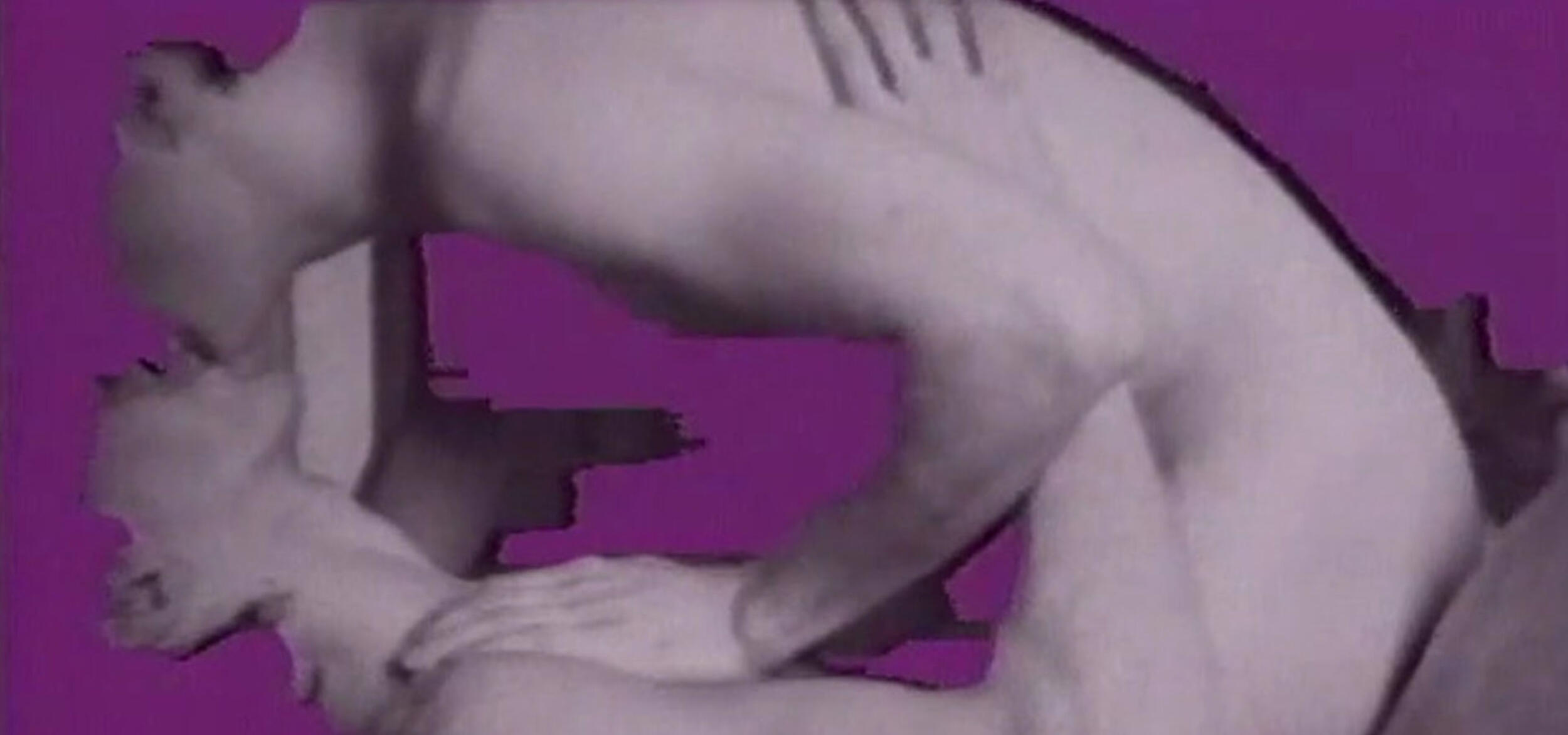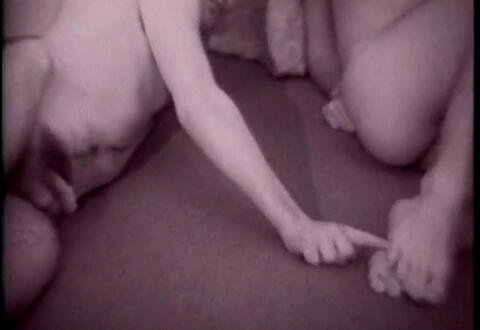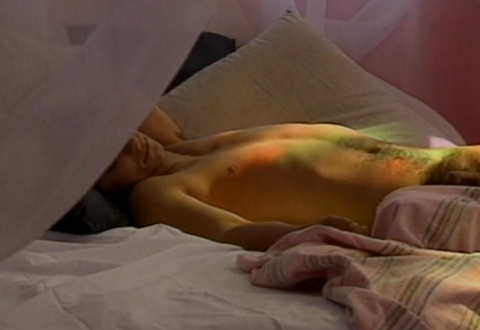
Marc Paradis, an Ogre’s Desire
The obsessive and transgressive work of a pioneer of queer video in Quebec and Canada.
List of works in program
TRAGIC EROS
Vidéographe is pleased to announce the launch of Marc Paradis, an Ogre’s Desire, a digital publication dedicated to the work of a pioneer of queer video art in Quebec and Canada. Since his debut, Le voyage de l’ogre (1981), Marc Paradis (1955-2019) has interrogated notions of sexuality, the body and homosexual identity. His aesthetic oscillates between raw and explicit realism and a certain classicism, particularly in his representations of the body and in his pictural references. The texts, their literary quality and their declamation play a central role and lend a tragic resonance to these stories of love, sex, rupture and death.
The two videos presented here* are the two poles of an obsessive and transgressive body of work. If the story of La cage (1983) is very simple - a couple that dissolves into a group of men - Harems (1991) presents itself as a complex palimpsest where the passion of a screenwriter and a gogoboy, the scenario of the first starring the second and an ancient paradise interwines. The very explicit La cage tends towards a disillusioned observation of daily life and sexuality, a world where drugs and orgies are a poor escape from boredom and loneliness. Harems offers a personal mythology that feeds on the icons of the 1980s - the gogo boy raised to the rank of tragic hero - as well as of Greco-Roman aesthetic: a world of light, sea, gynaeceum and fishermen browned by the sun.
The bilingual publication includes three new essays by Luc Bourdon, Alexis Lemieux and Denis Vaillancourt. It also comprises the 17 videos Paradis made, including two previously unseen works, Ecce Omo and Marrakech. A rich selection of previously unseen personal documents is also presented, including notebooks, scripts, cuttings, casting photos and research files.
*These videos contain elements that may not be suitable for some viewers (nudity, sexuality).
Biography
Born in Montréal in 1955, Marc Paradis studied drama and visual arts. Between 1978 and 1990, he also trained with the likes of Józef Robakowski, Bruno Bigoni, Jerzy Grotowski and Michael Kriegman. Paradis became interested in video in 1981, when he did a screen test for French filmmaker Jean-François Garsi, for whom he worked as an assistant. He went on to make Le voyage de l’ogre, the first of his 17 productions. His works question and consider romantic relationships between men, desire, fantasy, and the representation of sexuality, at times playing with the borders of pornography. In 1984, he made Scheme video with Luc Bourdon, followed by Say Cheese for a Trans-Canadian Look the following year, two works that look at video art in Canada. He also made portraits and video recordings of artists such as Denis Lessard, John Mingolla and Yves Lalonde. His work has received national and international recognition. Marc Paradis died in Montréal in the summer of 2019.
Image: Marc Paradis, La cage, 1984
We acknowledge the support of the Canada Council for the Arts.








